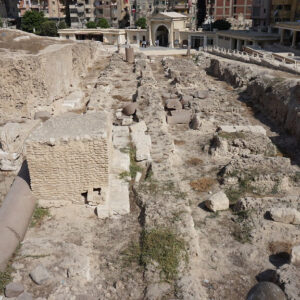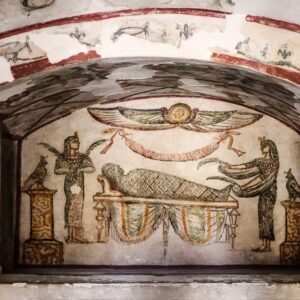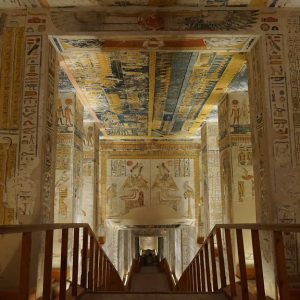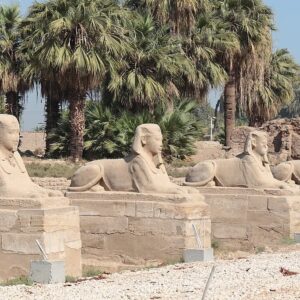Pompey Pillar and Serapeum
Pompey Pillar is one of the most famous attractions in Alexandria. It is considered the longest column in Egypt, as it is about 27 meters long. It was constructed in 292 AD by the trustee of Alexandria, Postumus.
This pillar or column is divided into 3 parts. The first part is its base that has inscriptions of names of ancient Egyptian Kings, referring to that this stone was reused. The second one is the body of the column taking a circular cylindrical shape and made of red granite from Aswan. Then the crown. Al-Maqrizi wrote about this crown that he heard the Alexandrians said that this crown allowing 22 persons to sit on it and having their food.
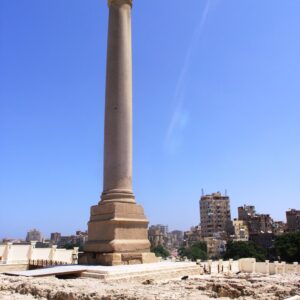
Different Names to This Pillar Pompey’s Pillar is a misleading name. It is believed that when the Roman General Pompey fled to Alexandria from Rome, Ptolemy XII murdered him and his head was put on the top of the column, but that is not true and this pillar has nothing to do with Pompey.
Arab called it masts pillar because they thought that it looks like the masts of the ships.
According to an inscription beside the column, the closest to the right name is Diocletian Pillar. This text refers to the trustee of Alexandria, Postumus, who built this pillar in gratitude for the Roman Emperor Diocletian as there was a famine in the city so Diocletian ordered that a portion of the wheat be sent to Rome annually be given to the Alexandrians. As well, he exempted them from paying taxes during these hard times.
Besides the pillar, there are two sphinxes and an open museum displaying what was discovered in the Serapeum, dedicated to Alexandria’s patron god, Serapis.
